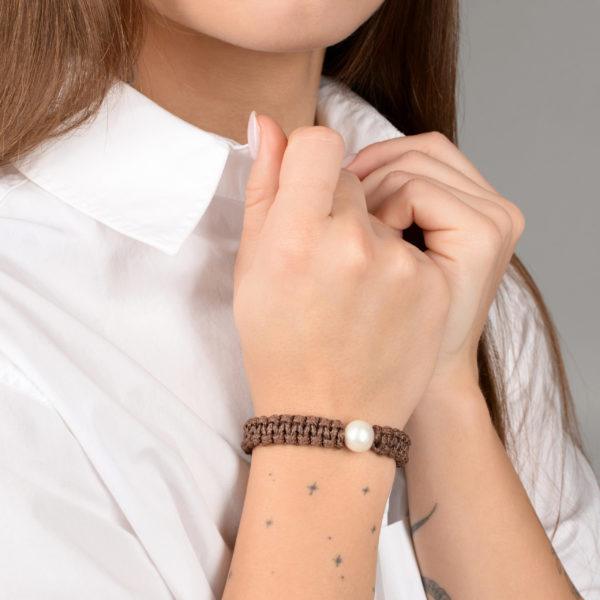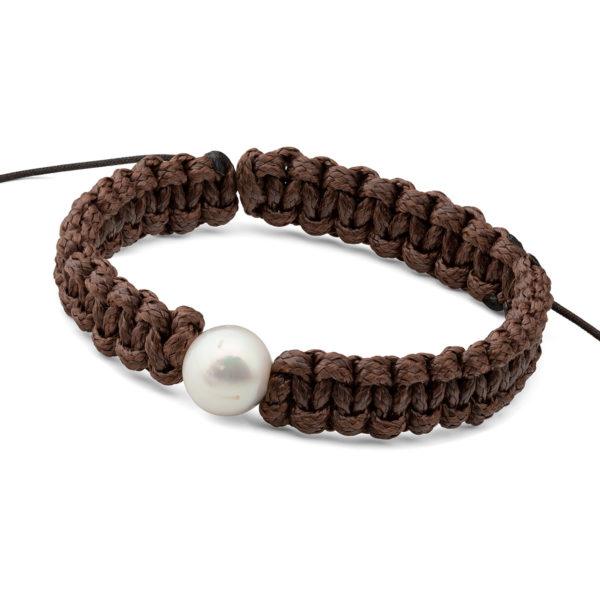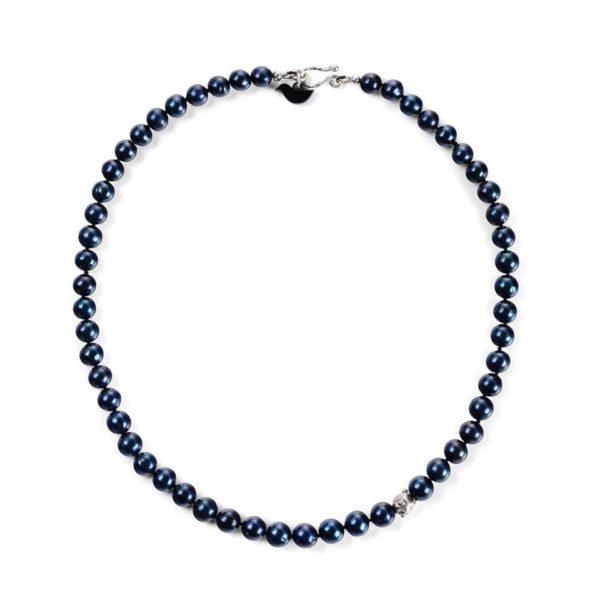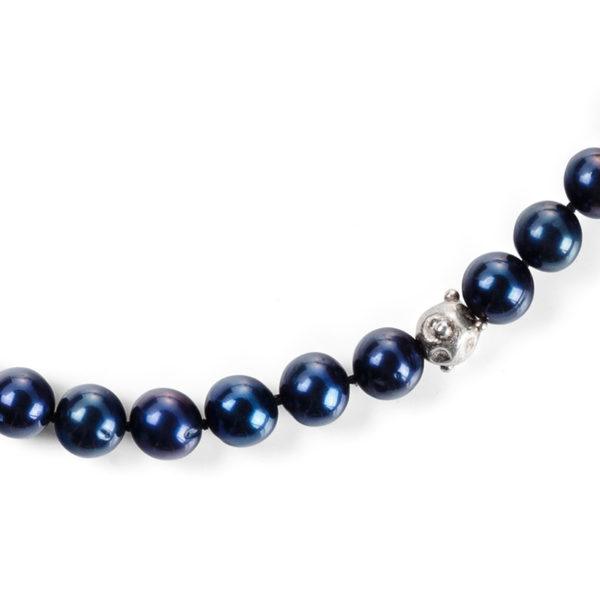Pearls: Why Are Some Ten Times More Expensive?
PEARLS
Pearls are a classic addition to any piece of jewelry that is suitable for a variety of occasions. These white shining stones are loved by brides, they can be worn every day or dressed up for a luxurious evening. A pearl necklace or earrings is a classic piece of jewelry that can be passed down as a family heirloom from generation to generation – of course, if you choose quality pearls, that is.
Marine or freshwater?
Natural pearls are very rare and insanely expensive, so this time we are talking about cultured pearls, which range in price from a few tens to a few thousand euros per stone.
Cultured pearls, like natural ones, are grown in mollusks, the only difference being that the sand does not enter the sink naturally, but is “implanted”. The mollusk is then released into a reservoir (marine or freshwater) and quietly grows the pearl for several years.
Cultured pearls are not inferior – often people are surprised to learn that cultured pearls are also very valuable and high quality. True, marine pearls are valued more than pearls grown in unsalted water.
Freshwater pearls are mostly grown in China, and marine pearls in Tahiti (black Tahitian pearls), Japan (Akoya pearls), and the South Seas around Australia and Indonesia. Freshwater pearls have no core and are made up entirely of mother-of-pearl – so 98% of these stones are not round but oval, buttoned, drop or baroque in shape.
Freshwater pearls are cheaper because they are easier to extract, making sea pearls more valued. Why? Sea pearls are larger, more beautiful in shape, luster, smoother surface and, of course, much more expensive than freshwater pearls.
Sea pearl species
Japanese Pearls:
(or Akoya) are the best known and most valued in the world. They have a particularly beautiful shine, are perfectly round in shape and reflect light well. In the past, Akoya pearls were grown only in Japan, but recently China has started cultivating them as well. Most of these pearls are white, grayish with a hint of pink, green or silver. Very rarely are blue extracted with a silver or pink tinge. Size: 1 – 11 mm.
South Sea Pearls:
are grown on the coast of Northwest Australia and their main advantage is size. They are larger than others. They are grown in small numbers, making them more valued and more expensive. Due to the thickness and density of the mother-of-pearl, it is very shiny and ideally reflects light.
Color: from silver to cold white to golden yellow. Size: 8 – 22 mm.
Tahitian / Black Pearls:
this is a work of art whose individuality is practically not possible to recreate. Tahitian pearls stand out in their play of colors in sunlight, as well as in a metallic hue that other species do not have. It is very difficult to find a pair of pearls because the shades do not match. So, in order to collect a necklace of similar shade and brilliance, it is necessary to re-select thousands of pearls by hand, which can take several years, therefore their price is very high.
Although referred to as black Tahitian pearls, the term black is somewhat misleading. In fact, these pearls are not completely black, they are usually silver, dark gray with a green, purple, gold hue. There are also shades of blue, eggplant or red. Size: 8 – 20 mm.
What to consider when purchasing pearls?
Each pearl is unique, you will not find the same pearls in the world. One of the two existing grading systems is used to assess the quality of pearls and they pay attention to the size, shape, color, luster, surface defects and pearl thickness of the pearl.
Different oyster sizes produce pearls of different sizes, which are very important for their evaluation. Size is measured in millimeters and weight in carats. The price changes significantly when the gem is larger than 8.5 mm.
When choosing pearls, it is very important to pay attention to their luster – it must be deep and intense. The pearl seems to shine from within. The brightness of the gloss is visible when the light is reflected in it itself. Be sure to inspect the pearl from all sides!
Matte gloss is caused by changes in the environment – sunlight, temperature. Such pearls are cheaper, less valued. The longevity, luster and light reflection of a pearl are determined by the weight of the mother of pearl. A quality gem is always cold and heavy. The thickness of the mother-of-pearl can only be checked with X-rays, but pay attention to areas near surface defects or drilled holes, if any.
PEARLS IN JEWELRY
Pearls are formed in various shapes: ideally spherical, oval, drop, pear, irregular (Baroque) and others. Perfectly round pearls are the rarest and most valuable; they are usually used to make necklaces. Semicircular pearls are also suitable for necklaces or other articles where a irregular shape is more suitable than a perfectly round pearl. Pearls with one side flattened are better suited for earrings or similar articles in which the flat side of the pearl is covered and gives the impression that it is a round pearl. Drop and pear shaped pearls are sometimes called teardrop shaped pearls and are mainly used for earrings, pendants or as a central necklace pearl.
Available in over 2000 pearl shades. Jewelry also evaluates the thickness of the mother-of-pearl shell, the quality of the shell (the smoother the surface, the lesser the wrinkles), the shininess of the mother-of-pearl (the clearer the luster, the more rainbow reflections; the less valuable the pearls). Pearl jewelry has special names. The choker is a necklace close to the neck. Princess – when the necklace hangs just below the clavicle. Matinè is slightly above the breast, the opera reaches the sternum, and the pearl necklace stretches lower than the opera.
PEARL QUALITY
Unconventional pearls or pearl clumps are highly valued. 1886 A 4 cm cross-shaped combination of nine pearls called the Southern Cross was on display at an exhibition of Indian products in London.
Jewelry is classified according to:
Gloss (glossy, semi-gloss, semi-matte, matte, etc.)
Surface cleanliness (clean, stained, etc.)
Shape (round, drop shape, baroque shape, etc.)
Color (pink, silver, cream, gold, bluish gray, etc.)
Size (by diameter)
PEARLS IN HISTORY
Coco Chanel, who has made pearls the most democratic piece of jewelry, said they are suitable for every woman and for any outfit. A classic combination of white jewelry with a black sweater, jacket or a small black dress – Coco’s legacy for the modern day. Pearls, a symbol of beauty and innocence, have a millennial history and have always been worshiped by various cultures and countries. They are first mentioned in the Chinese chronicle 4200 years ago, in the history of King Ju: pr. Kr. King Ju received the tribute of the river Huai – glowing pearls… “In the year 2206 B. C. in China, pearls were an attribute of the palace hierarchy: the rank of emperor’s designer was marked with a jade, turquoise or coral bead, and the highest nobleman had a pearl on his headdress.
The ancient Greeks and Romans believed that pearls give the eyes radiance and protect them from the suffering of unrequited love. Greek legends tell of the tears of a sea nymph turned into pearls. The Romans were convinced that the meaning of pearls changes with color: yellow gives wealth, brown gives wisdom, white guarantees freedom, and green brings happiness. In China, pearls were considered the elixir of youth, and in Mongolia, the symbol of power. Indian merchants believed that a ring with a pearl protects against thieves and failed deals. These “stones” were also thought to be dangerous because they were able to remove the “rosy pink glasses”. The master of pearls sees the world without embellishments, but at the same time they suppress arrogance and splendor, giving permanence. Thus, the pearl is not the best “stone” for love adventures, on the contrary, it strengthens the bonds of love and fidelity and in this case symbolizes humility.
For people in Japan, Saudi Arabia, Iraq and the Pacific, this “stone” is still national. They believe it is a symbol of health, happiness, longevity and love. Many nations have retained faith in the mysterious links between pearls and their owner. Tibetan medical experts claim that pearl jewelry stops shining before a person becomes ill, thus revealing the symptoms of the disease. Indeed, there are links between the radiance of a “stone” and the state of health of the person who has it. If pearls are worn so that they touch the body, the “stone” dries slowly. However, the skin of the elderly is drier, so their pearls lose their luster faster, speaking of a relentless time for everything.
PEARL MAINTENANCE
Pearls, unlike other semi-precious stones and gemstones, have a special sensitivity and are strongly exposed to the environment. Their main enemies are high temperature, humidity, bright light and polluted air. They can be damaged even by too dry of a woman’s skin. Cigarette smoke is particularly harmful: pearls become cloudy from them. To prolong the life of pearls, it is necessary to wear them. The pearls are then constantly exposed to sweat (this is weakly acidic), slowing down their dehydration process, thus preserving their luster. The pearls should be cleaned in a mild soap solution. It is also easy to scrub with potato starch: it removes both dirt and accumulated unnecessary moisture.


 Lietuviškai
Lietuviškai Español
Español














